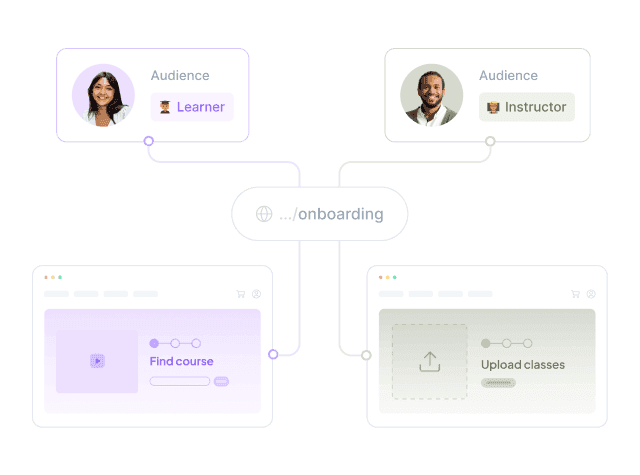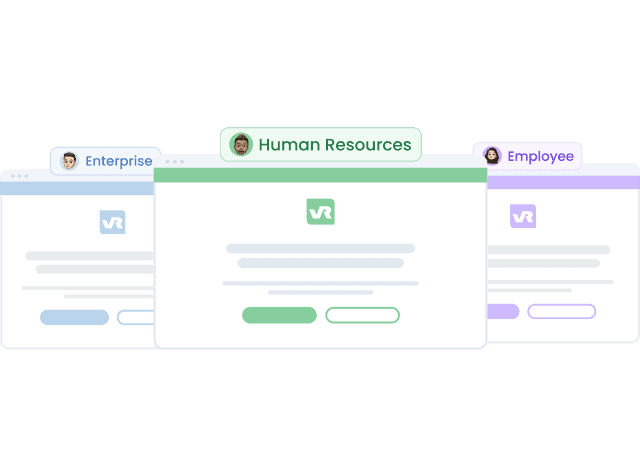If using RFM analysis to segment your public is still not a part of your growth strategy, you are probably missing out on great opportunities. This model shows you how to increase customer retention and lifetime value, and believe us: adopting it is easier than you can imagine.
In this article, we’re going to delve into the main concepts behind this technique, starting by simply defining its meaning, exploring its main benefits, and then sharing examples of segmentation.
What does RFM mean?
RFM stands for Recency, Frequency, and Monetary Value, which refers to a method for measuring the value of a given customer.
RFM analysis applies to analyzing transactional data and identifying different customer segments based on their conversion history. By performing it, you can get a complete overview of each user segment separately, according to the recency of the last conversion, the frequency it usually happens, and the lifetime value of each customer.
What do recency, frequency, and monetary value mean?
The RFM model is based on three quantitative factors:
Recency
Generally, recency shows how long ago your customer performed the desired action (most of the time that means a conversion).
Frequency
This metric indicates how many times they have repeated the action in a specific timeframe.
Monetary value
The monetary value, after all, indicates how valuable that customer is for your business.
How to define the RFM parameters?
Analyzing which customers are the most valuable to your business requires looking at those who have converted recently, converted most frequently, and spend more than the rest of your users on your site or app. We’ll explain.
It all begins with adequate segmentation. The first step is to cluster customers according to different behaviors and purchasing patterns based on the RFM variables mentioned above. You can create three segments for each one of them:
- Frequency: frequent purchases, average frequency, a single purchase
- Recency: most recent customers, average recency, new customers
- Monetary Value: customers who spend over a certain amount, average amounts, and below a certain amount.
You can also create more granular segments by adding the following:
- Customers who return frequently but spend very little (they are probably motivated by sales and discounts)
- Customers who buy only once, paying an above-average ticket: that can indicate the user spends a lot in the first order but doesn’t come back again
- VIP customers: those who get an overall high score, especially in monetary value
- Customers who previously scored high frequency and monetary value but stopped ordering from you: a sign that they may have migrated to your competitors.
Organizing things like that may bring out negative aspects of your brand, products, or marketing strategy. Nevertheless, acknowledging these aspects may be the first step before changing them.
Let's say you work for a pet shop and you just finished promoting a big discount campaign for pet food. Many customers took advantage of the low price and ordered a reasonable quantity that would last for a while. Then, you will probably have an overall drop in recurrent orders from the first segment following the campaign period.
With that in mind, it would be interesting to analyze what makes a customer go from the low-monetary-value to a high-monetary-value segment. Is it a consequence of a product recommendation in the checkout, a free shipping campaign, or a content personalization? Would it be possible to segment other low-monetary-value customers and make the same offer to prompt that behavior?
Another interesting point is to understand what makes low-frequency and low-recency customers start buying again. If there is a reasonable number of that type of customer, it would be worthwhile to understand what motivates them.
There are countless insights you can get from performing the RFM analysis, and they are very precious to understand the main customer segments. But you should also take actions based on what you learn from it.
Read our personalization guide and learn everything you should know about website personalization and how to get the best results.

How to use the RFM analysis
RFM analysis can help you take your segmentation strategy to a whole new level. You can discover and create segments such as:
- Who is the 1% of customers who generate most of your revenues?
- Who are the loyal customers who return frequently?
- Who are the customers who made big orders in the past but haven’t bought anything later?
Based on these segments, you can ask yourself questions like:
- What would encourage high-monetary-value and low-recency customers to return?
- What makes high-frequency and low-recency customers so loyal? What makes them value my brand?
- What other characteristics (geographic, demographic, and behavioral) do my high-monetary-value customers have in common? How can I use them to create a potential new customer segment?
To address the last question, you can show personalized content to specific segments based on their needs and preferences. Besides that, you can identify behavioral patterns to predict your customers' needs depending on what you offer.
Let’s assume you have created a new customer segment of users that ordered something from your pet shop in the last three months. You notice a considerable amount of them bought products for puppies. Then, a good idea for a personalized campaign should be sending educational content on introducing new products for puppies or even sending free samples so they could try them out.
Why is RFM analysis important?
Marketing professionals are usually obsessed with optimizing the acquisition funnel and the ROI of marketing campaigns. To reach the right target with the most relevant offers, they typically analyze attributes such as age, gender, interests, browsing behavior, and a great deal of other information.
But when customers have already gone through this entire process, why do some of them still leave so quickly? Having a CAC (customer acquisition cost) higher than the first-order value is not that unusual, so it's crucial to get them back.
We have already seen many companies focus on reducing acquisition costs by optimizing ads, landing pages, and conversion rates. Still, it is a common trap to completely ignore visitors returning to the site, even when there are opportunities for lots of personalization, additional sales, and loyalty marketing.
How to compute RFM analysis
Ranking users according to the RFM analysis is relatively simple. You can attribute a score to each customer based on one of three variables, using a scale from 1 to 5 or 1 to 10.
A simple idea considers the following:
- The more recent the conversion is, the higher the recency score
- The higher the number of conversions is for a given period, the higher the frequency score
- The higher the lifetime value is, the higher the monetary value score.
Moreover, it is up to you to decide what weight to attribute to each variable based on your business goals. In the pet shop example, it makes sense to prioritize the frequency if the business goal is to optimize the sale of consumer products. On the other hand, e-commerce selling electronic equipment would probably prefer looking to the monetary value considering the lower conversion frequency.
Why having 3 platforms for content management, AB testing, and personalization when you can have a single one?

What are the benefits of RFM analysis?
The main benefit of RFM analysis is its potential for optimizing the customer base you already have. It is even more critical for businesses with a high recurrence rate since it can save a great deal of money, time, and effort on acquiring new customers.
Retaining a customer is about seven times less expensive than acquiring one, without even mentioning the benefits of having them as a brand evangelist who organically talks about your brand.
To take this strategy to the next level, you can use personalization. It can help you impact users and generate conversions much more quickly, saving money and reducing the effort to acquire new customers.
Conclusion
RFM analysis is a powerful strategy for understanding customer behavior, segmenting them according to their purchase history. This strategy allows you to identify your most valuable customers, measure the effectiveness of your marketing campaigns, and improve customer retention.
We hope you found valuable information about RFM analysis in this post. Do you want to segment your audience and use this clusters to personalize the user experience? Our platform allows you to do just that. Create your free account and start today.